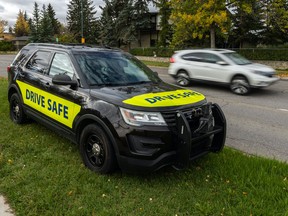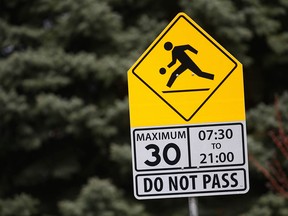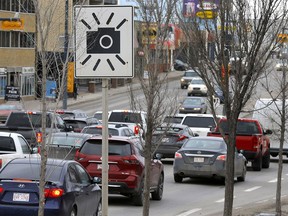Article content
When driving, there’s nothing quite as scary as being tailgated.
Trending News Updates
Police can’t be everywhere all at once, so it’s in evitable they will some help from automated enforcement
Published Oct 07, 2024 • Last updated 4 days ago • 3 minute read
You can save this article by registering for free here. Or sign-in if you have an account.

When driving, there’s nothing quite as scary as being tailgated.
Advertisement 2
This advertisement has not loaded yet, but your article continues below.
THIS CONTENT IS RESERVED FOR SUBSCRIBERS ONLY
Subscribe now to read the latest news in your city and across Canada.
SUBSCRIBE TO UNLOCK MORE ARTICLES
Subscribe now to read the latest news in your city and across Canada.
REGISTER / SIGN IN TO UNLOCK MORE ARTICLES
Create an account or sign in to continue with your reading experience.
THIS ARTICLE IS FREE TO READ REGISTER TO UNLOCK.
Create an account or sign in to continue with your reading experience.
or
Article content
Perhaps understandable if someone’s going slow in the left lane on Deerfoot Trail or another freeway-style thoroughfare — but even then, this is not an excuse.
Driving too close is always dangerous because it takes away the time and space needed to react to unexpected situations that could require someone to slow down or stop.
Even more enraging is being tailgated … in a playground zone. This has happened to me more often than I can remember.
What exactly was the tailgater expecting me to do? I certainly wasn’t going to go over the speed limit. I’d get out of the way if I could to let them pass — not that passing in a playground or school zone is legal anyway.
Wouldn’t it have been great, I’ve often thought, if there were a police officer present to witness this and give the tailgater a ticket?
Calgary Sun Headline News
Get the latest headlines, breaking news and columns.
By signing up you consent to receive the above newsletter from Postmedia Network Inc.
Thanks for signing up!
A welcome email is on its way. If you don’t see it, please check your junk folder.
The next issue of Calgary Sun Headline News will soon be in your inbox.
We encountered an issue signing you up. Please try again
Article content
Advertisement 3
This advertisement has not loaded yet, but your article continues below.
Article content

As the Alberta government continues its long crusade against certain kinds of photo radar, conventional traffic enforcement remains an option for police. Too bad they can’t be everywhere at once.
The government has already banned the practice on provincially operated highways and is set to extend this prohibition to major roads connected to them.
As part of earlier changes, the province outlawed the use of unmarked police vehicles for the purpose of automated enforcement. You’d have to try very hard to not see these vehicles now, as they’ve been emblazoned with fluorescent yellow decals bearing the words “Drive safe” in large lettering.
Authorities have also effectively eliminated so-called “fishing holes,” where traffic enforcement would be conducted with officers hidden out of drivers’ view just ahead of a speed zone change, or so something like this.
Advertisement 4
This advertisement has not loaded yet, but your article continues below.
Article content
If the point of traffic enforcement is meant to deter driver misbehaviour, then the presence of law enforcement should be bold and in your face, as opposed to being subtle and out of sight.
When police are sneaking around to catch unsuspecting speeders, one could easily make the argument that revenue generation has become more important than road safety.
On the point, the province is undoubtedly correct.
That being said, there still needs to be a way for cities to catch and punish speeders, tailgaters and other scofflaw drivers.
There are only so many police officers to go around, and it would be wasteful to post a police officer on every street corner for this purpose.
While traditional enforcement can be useful, photo enforcement is often more cost effective to deploy.
Advertisement 5
This advertisement has not loaded yet, but your article continues below.
Article content

It’s been more than four years since the province began temporarily preventing municipalities from upgrading or installing photo radar equipment. The ban has been extended until Dec. 1, 2024, while Alberta continues a review of automated traffic enforcement.
And since then, there have been continuing rumblings of further restrictions on the practice.
Whatever policy the province ends up settling on, municipalities must have the freedom to use speed cameras and red lights cameras where it makes sense to do so.
A 2012 review of multiple studies from around the world showing the use of automated traffic enforcement, when used properly, can reduce rates of speeding by as much as 65 per cent and auto crashes by as much as 50 per cent.
Advertisement 6
This advertisement has not loaded yet, but your article continues below.
Article content
Working in concert with cameras, fines must also be stiff enough to act as a deterrent.
(I do recognize that the way things are currently structured, financial penalties have a lesser impact on well-off law-breakers. Perhaps an income-linked category of fines could be considered.)
And if the province is really serious about preventing police services from using photo radar as a revenue source, it should provide the ultimate incentive and fund them properly, so they law enforcement agencies don’t feel obligated to turn radar guns into cash machines.
Police departments shouldn’t be punished for giving up revenue doing the right thing.
There is no excuse to run red lights, to drive over the speed limit or to break any other traffic rules.
Cities must continue to have access to a full suite of tools — in-person and automated — to keep roads safe.
rleong@postmedia.com
Recommended from Editorial

Speed camera ‘fishing holes’ characterization draws police chief’s ire

Municipalities will have to justify where they place photo radar
Article content
Share this article in your social network
etr etr etr etr etr etr etr etr etr etr etr etr etr etr etr etr etr etr etr etr etr etr etr etr etr etr etr etr etr etr etr etr etr etr etr etr etr etr etr etr etr etr etr etr etr etr etr etr etr etr etr etr etr etr etr etr etr etr etr etr etr etr etr etr etr etr etr etr etr etr etr etr etr etr etr etr etr etr etr etr etr